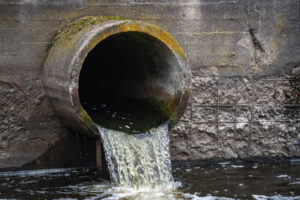By Stan Meiburg, Wake Forest University
President Donald Trump and Environmental Protection Agency Administrator Lee Zeldin have announced their intent to reconsider dozens of current regulations in an effort to loosen standards originally imposed to protect the environment and public health. But it’s not as simple as Trump and Zeldin just saying so.
A few of the changes, such as reconstituting the membership of EPA’s Science Advisory Board and Clean Air Act Scientific Advisory Committee or using enforcement discretion to avoid targeting favored industries, are administrative measures that can be changed with the stroke of a pen.

But many, including carbon emissions standards for power plants and motor vehicles, wastewater limits for refineries and chemical plants, or air pollution standards, can only be revised in accordance with the Administrative Procedure Act, a federal law first passed in 1946.
That process includes public notice of the proposed changes, an opportunity for the public to comment on those proposals, and a review of those comments by the responsible federal agency.
There are some explicit restrictions that prevent loosening of existing environmental standards for clean air and water. In general, though, if the administration has evidence to support its claims that the protections should be reduced and the administration follows the process required by law, it is possible to loosen the restrictions. But as a former longtime senior leader at EPA and student of environmental policy, I know that process is not easy – and it’s not meant to be.
As examples of how the process of changing the rules and standards works, let’s look at the provisions of the Clean Air Act and the Clean Water Act. Similar provisions exist in the nation’s wide range of environmental protection laws, including the Safe Drinking Water Act; the Toxic Substances Control Act; the Federal Insecticide, Fungicide and Rodenticide Act; the Resource Conservation and Recovery Act, and others.
Keeping the air clean
The Clean Air Act sets uniform national standards for air quality, and it created the rules by which states create plans to meet those standards.
One section of the law, Part C of Title I of the act, is titled “Prevention of Significant Deterioration of Air Quality.” Its provisions are meant to prevent states that meet the national standards from allowing air quality to get worse in the future.
Its basic effect is to require that new sources of pollution, or existing ones that make significant equipment changes, use the best available technology that meets or exceeds the minimum federal standards for pollution control. Additional protections apply to sensitive areas like national parks.
For areas that did not yet meet the standards, a set of amendments passed in 1990 included one that prevented air quality from getting worse. That provision, known as the “anti-backsliding rule,” says that no state whose air did not meet the standards before Nov. 15, 1990, can change its plan “unless the modification insures equivalent or greater emission reductions.” And once a state’s air quality improves to meet the standards, the state must follow maintenance plans to make sure the air quality doesn’t get worse.
Protecting the water
Under the Clean Water Act, states set water quality standards to protect drinking water and water for recreation, as well as to protect wildlife.
The Environmental Protection Agency has interpreted key sections of the law to require that states ensure that whatever companies discharge into the water from factories or other operations don’t degrade downstream water quality – even if the existing conditions are better than the minimum standards. Known as “anti-degradation provisions,” these rules mean water that is currently far cleaner than the standards require can’t legally be made more dirty, even if only a little bit.
The Clean Water Act also contains anti-backsliding provisions that prevent new discharge permits from allowing more pollution than previous permits did.
Rollbacks are possible
Many federal standards can be weakened, so long as the EPA follows the Administrative Procedure Act’s process.

Since the 1970 passage of the Clean Air Act, the national air quality standards have not been weakened. Technology standards for air and water pollution controls have tightened over time because of advances that improved performance while reducing costs.
To change the rules under the Clean Air Act, the EPA must first provide evidence that the existing rules are no longer appropriate. Without that evidence, any changes may be overturned by the courts as not founded in facts – in legal terms, “arbitrary and capricious.” The first Trump administration’s efforts to change the rules failed in many court cases on this basis.
This review process is also required of the EPA’s intended effort to revoke the so-called “endangerment finding,” which establishes the agency’s authority to regulate greenhouse gases under the Clean Air Act. If successful, that revocation would undo the legal grounds for carbon dioxide and methane pollution standards for motor vehicles, electric utilities, oil and gas production, and large industrial sources.
Such an effort will certainly end up in court. The endangerment finding began with a 2007 Supreme Court ruling that required the EPA to assess whether greenhouse gas emissions endanger human health and welfare. In 2009, the agency found that they did. In 2012, the D.C. Circuit Court of Appeals upheld that finding, and the Supreme Court declined to reconsider the case.
Other ways to reduce environmental protections
The Trump administration’s stated plans for amending water pollution rules illustrate that rolling back protections can also mean undoing efforts to strengthen restrictions, if those efforts did not get finalized before 2025.

For instance, in June 2024, the Biden administration’s EPA notified the public that it intended to tighten restrictions on manufacturing plants’ discharges of per- and polyfluoroalkyl substances, also known as PFAS, into surface water or public sewage-treatment systems. Those are a large category of human-made chemicals, used to make products resistant to water, stains and heat, which can be harmful to human health at some levels. These chemicals don’t break down easily and therefore are often called “forever chemicals.”
But the changes were never finalized, and on the second day of Trump’s second term, the new administration announced that the proposal had been withdrawn.
Rollbacks can also mean extending compliance deadlines for current standards. For example, the EPA has announced that it will review discharge rules for power plants. Even if the rules themselves don’t change, giving power plants more time to comply with the rules can increase pollution.
No change until new versions are finalized
In general, U.S. environmental laws do not prevent the EPA from weakening protection standards. But merely announcing the agency’s intention to do something doesn’t make it so.
In a recent executive order, Trump claimed he could take an action without public notice and comment “because I am ordering the repeal.” But federal law specifies that the process of change requires explicit descriptions of scientific and technical reasons and evidence that justify any proposed actions, and a notice-and-comment process that involves the public.
In the meantime, the existing standards remain in place, enforceable by citizen lawsuits even if the federal government decides not to enforce them. Agencies require technical and legal expertise to craft rules that can survive inevitable challenges in the courts. Many of those experts have been fired or laid off by the Trump administration, making the job of changing regulations more difficult.![]()
Stan Meiburg is executive director of the Sabin Center for Environment and Sustainability at Wake Forest University.
This article is republished from The Conversation under a Creative Commons license. Read the original article. Banner photo: Pollution is released from a smokestack (iStock image).
Sign up for The Invading Sea newsletter by visiting here. To support The Invading Sea, click here to make a donation. If you are interested in submitting an opinion piece to The Invading Sea, email Editor Nathan Crabbe at nc*****@*au.edu.



